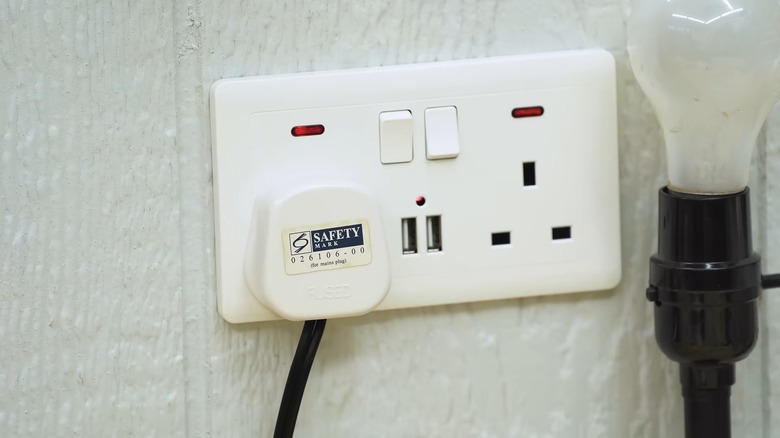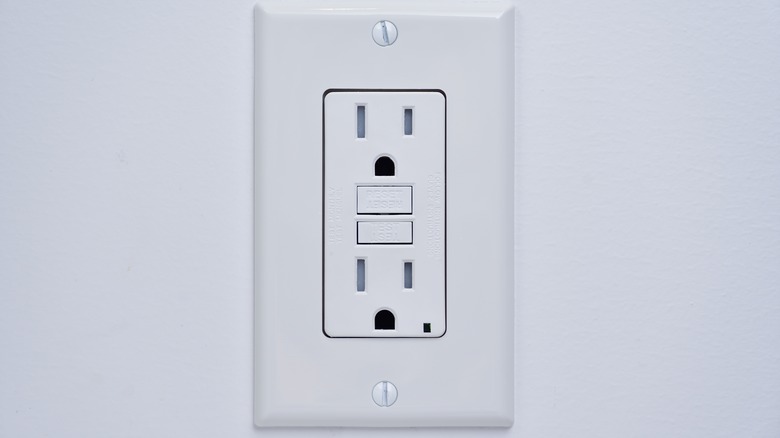Why Most American Outlets Don't Have Switches (But Other Countries' Do)
One of the often-ignored pieces of modern technology is powered receptacles (outlets), which are used daily to run a variety of devices and appliances. Electrical plug types come in a wide range of designs, with regions around the world adopting unique standards and requirements. The U.K. outlets often feature rocker switches, which activate or turn off the power going to the device plugged into them. In the U.S., on the other hand, outlets with switches are rarely seen, and it boils down to a few key reasons.
Installing switches directly on outlets isn't required by the National Electric Code (NEC). The NEC requires contractors and tradesmen to complete work to code, but nothing beyond. Adding additional functionality to each outlet would likely increase the costs and complexity of the job. In addition, American systems do feature switch-controlled outlets; it's just that instead of being incorporated into the outlet, it's a standalone switch on the wall.
According to the NEC, as reported by Electrical Contractor, residences must have at least a single wall-switch in every "habitable" room, which directly controls power to one outlet. It's because of this rule that you can plug something like a floor lamp into a specific receptacle, and then turn it on or off using a switch next to the room's entrance.
Are there advantages to having switches on every outlet?
There are some benefits to having switches on wall outlets, including being able to completely shut off electricity going into individual household devices. Even when shut off, certain things like TVs, chargers, and computers can still be pulling a little bit of energy from the wall, often referred to as phantom power. With a rocker switch corresponding to each socket, you flip the power off without having to completely unplug the device.
However, with the advent of smart plugs, some of the best energy-saving tech for your home, you can remotely deactivate power from your smartphone, largely negating the need for an outlet switch. Depending on who you ask, some consider switches on outlets to be a necessary safety feature.
For example, Australia incorporated rigid requirements for switches on every outlet in an effort to reduce the chances of electric shock. The argument is that this added protection prevents children from interacting with a live socket.
Are U.S. outlets safe?
To address the additional risks to children, in 2008, the NEC began requiring tamper-resistant outlets in most 15- and 20-amp receptacles found in homes. These units include shutters that remain closed unless a suitable plug is inserted, which triggers the shutters to open. This mechanism prevents people from inserting foreign objects into the slots designed for the prongs on a plug, effectively preventing electric shock.
These tamper-resistant outlets are supposed to be installed in new construction and renovations (with some exceptions), including single-family structures, mobile and manufactured residences, garages, tool sheds, and boathouses, among other places. Public spaces are also required to equip them, like schools, daycare centers, hospitals, and assisted living centers. In some cases, electrical outlets are even installed upside down as an additional safety precaution.
You might be wondering, if tamper-resistant outlets are required in so many places per the NEC, why can you still buy traditional receptacles at the hardware store? While tamper-resistant outlets are safer and mandatory in many instances, there are some locations, such as commercial environments, where they're not required. This is because such places typically don't have children present, negating the need for the additional safety measure.


